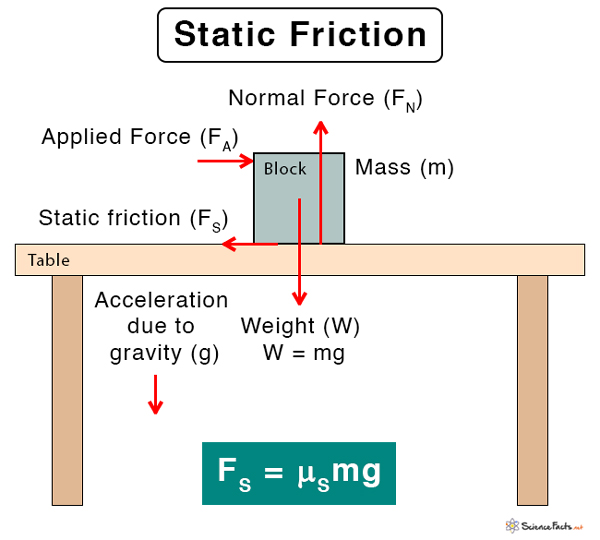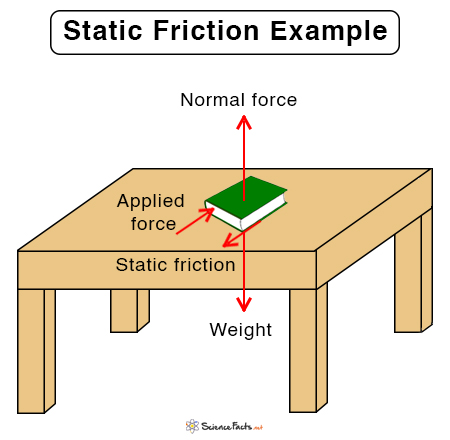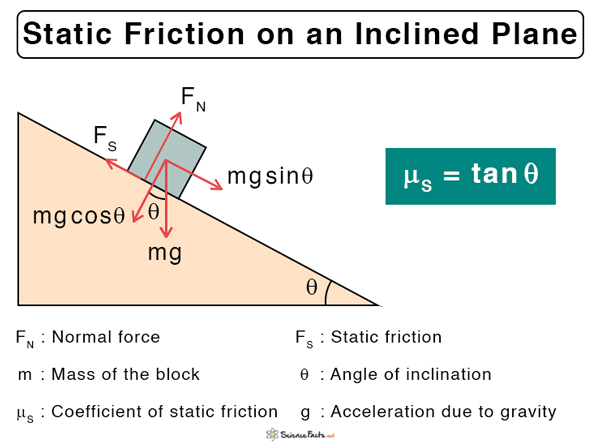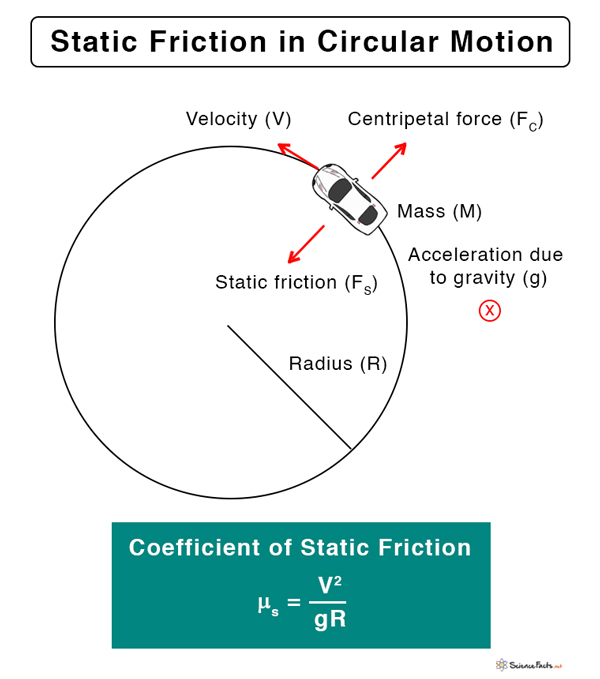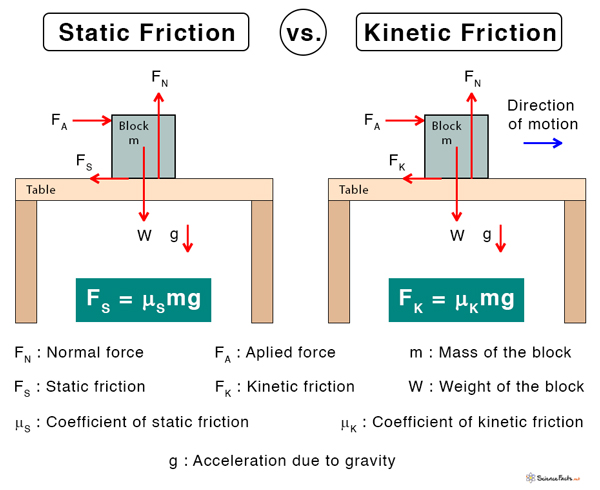The static friction force always occurs at the contact region between the object and the surface. Essentially, it takes place between two surfaces in contact. When the applied force is large enough to move the object, the static friction disappears, and kinetic friction comes into action.
Static Friction Examples
Characteristics of Static Friction
Laws of Static Friction
How to Calculate Static Friction
Limiting Friction
How to Reduce Static Friction
Advantages and Disadvantages of Static Friction
Applications of Static Friction
Difference between Static and Kinetic Friction
A book lying on a table
A car parked on a hillA towel hanging from a rackA person walking on a floor
Contact forceResponsive forceReaches a maximum value before kinetic friction takes over
Proportional to the normal forceEqual and opposite to the applied forceDependent on the surface roughnessIndependent on the area of contact between two surfaces
Static Friction Equation
The static friction equation can be derived from the laws of friction.
- Horizontal Surface Suppose an object of mass m is lying motionless on a table. When a force F is applied to it, the table responds by exerting an equal and opposite force at the contact region. This force is known as static friction FS. According to the above laws, FS is proportional to the normal force FN. FS ∝ FN Or, FS = μS FN The constant of proportionality is known as the coefficient of static friction. It is a unitless and dimensionless quantity whose value depends upon the nature of surfaces. Smooth surfaces have low values, whereas rough surfaces have high values. The weight W of the object is given by W = mg From Newton’s third law of motion, the weight is balanced by the normal force. W = FN Or, FN = mg Therefore, the formula for the magnitude of static friction is given by FS = μS mg Work done W by force is given by the product of force and displacement d. W = F x d Since the static friction force does not displace the object, therefore d = 0 and hence, W = FS x 0 = 0 The work done by static friction is zero.
- Incline Plane Suppose the block is motionless on an inclined plane that makes an angle θ with the horizontal. Its weight mg can be resolved into two components – one parallel to the surface and the other perpendicular to the surface. Perpendicular component: mg cos θ From Newton’s third law, the normal force is FN = mg cos θ Applying the friction laws as before, the magnitude of static friction is FS = μS mg cos θ Therefore, the static friction is dependent on the angle of the ramp. As the angle is increased, the object starts to move, and kinetic friction takes over. Parallel component: mg sin θ When the angle of inclination is increased, the block starts to move. Assuming that the block moves with a constant velocity such that there is no acceleration, then mg sin θ must be equal to the frictional force. mg sin θ = FS Or, mg sin θ = μS mg cos θ Or, μS = tan θ
- Circular Motion Suppose a car of mass M is moving with a velocity V around in a circle. It will have a force due to its weight W, balanced by the normal load FL. FL = W = Mg It will also experience a centripetal force FC directed away from the center of the circle. If R is the radius of the circular path, then the centripetal force is, FC = MV2/R Since the car is not skidding, the centripetal force will be balanced by the static friction FS, which is given by FS = μS FL = μS Mg And, FC = FS Or, MV2/R = μS Mg Or, μS = V2/gR The above equation gives the value of the coefficient of static friction needed to provide the desired friction force to allow a car, traveling at speed V, to make it around a flat curve of radius R. FL = (FS)max
Advantages
Makes motion on a surface possible (e.g., walking, running, driving, skating, and writing)Prevents slipping and sliding (e.g., a ladder can stay on the wall, and objects can pile up on top of one another)Allows vehicles to stop using brakes
Disadvantages
Makes it hard to push and pull an objectMakes us slip on ice due to low friction
Friction welding stabilizes and strengthens cold welded joints
Static Friction vs. Kinetic Friction
